Hossein Jafari
Distributed Federated Learning for Vehicular Network Security: Anomaly Detection Benefits and Multi-Domain Attack Threats
May 29, 2025Abstract:In connected and autonomous vehicles, machine learning for safety message classification has become critical for detecting malicious or anomalous behavior. However, conventional approaches that rely on centralized data collection or purely local training face limitations due to the large scale, high mobility, and heterogeneous data distributions inherent in inter-vehicle networks. To overcome these challenges, this paper explores Distributed Federated Learning (DFL), whereby vehicles collaboratively train deep learning models by exchanging model updates among one-hop neighbors and propagating models over multiple hops. Using the Vehicular Reference Misbehavior (VeReMi) Extension Dataset, we show that DFL can significantly improve classification accuracy across all vehicles compared to learning strictly with local data. Notably, vehicles with low individual accuracy see substantial accuracy gains through DFL, illustrating the benefit of knowledge sharing across the network. We further show that local training data size and time-varying network connectivity correlate strongly with the model's overall accuracy. We investigate DFL's resilience and vulnerabilities under attacks in multiple domains, namely wireless jamming and training data poisoning attacks. Our results reveal important insights into the vulnerabilities of DFL when confronted with multi-domain attacks, underlining the need for more robust strategies to secure DFL in vehicular networks.
Enhancing Predictive Accuracy in Pharmaceutical Sales Through An Ensemble Kernel Gaussian Process Regression Approach
Apr 15, 2024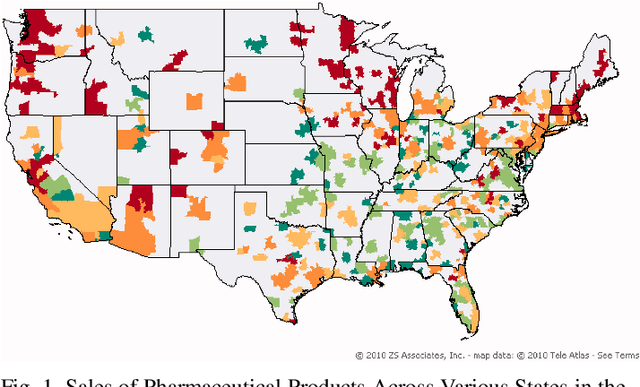
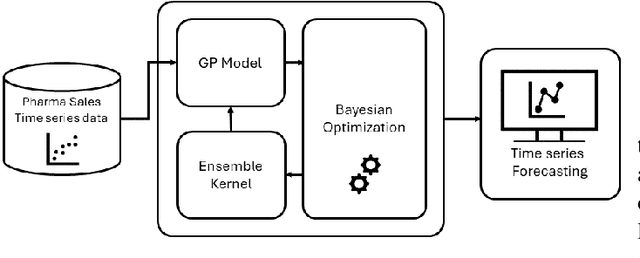
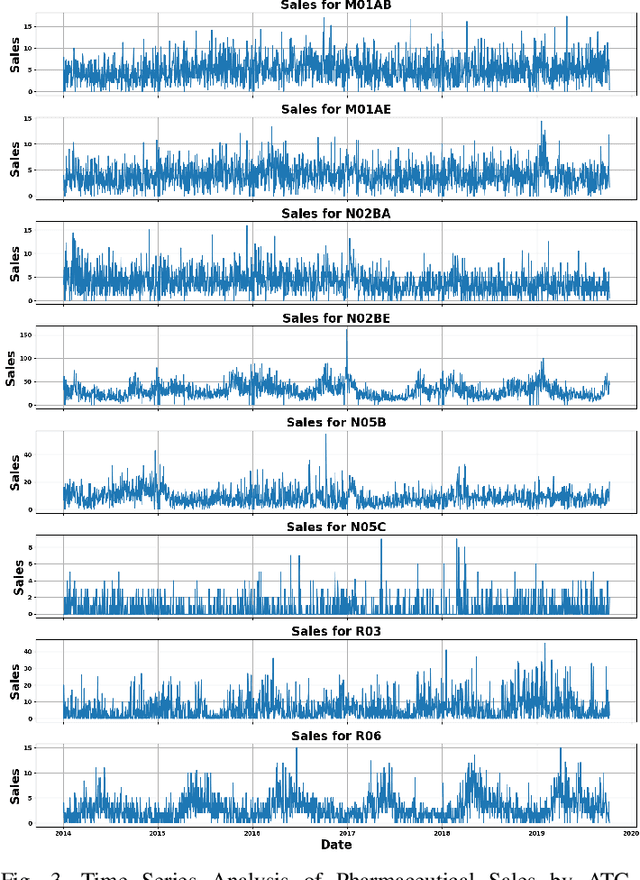
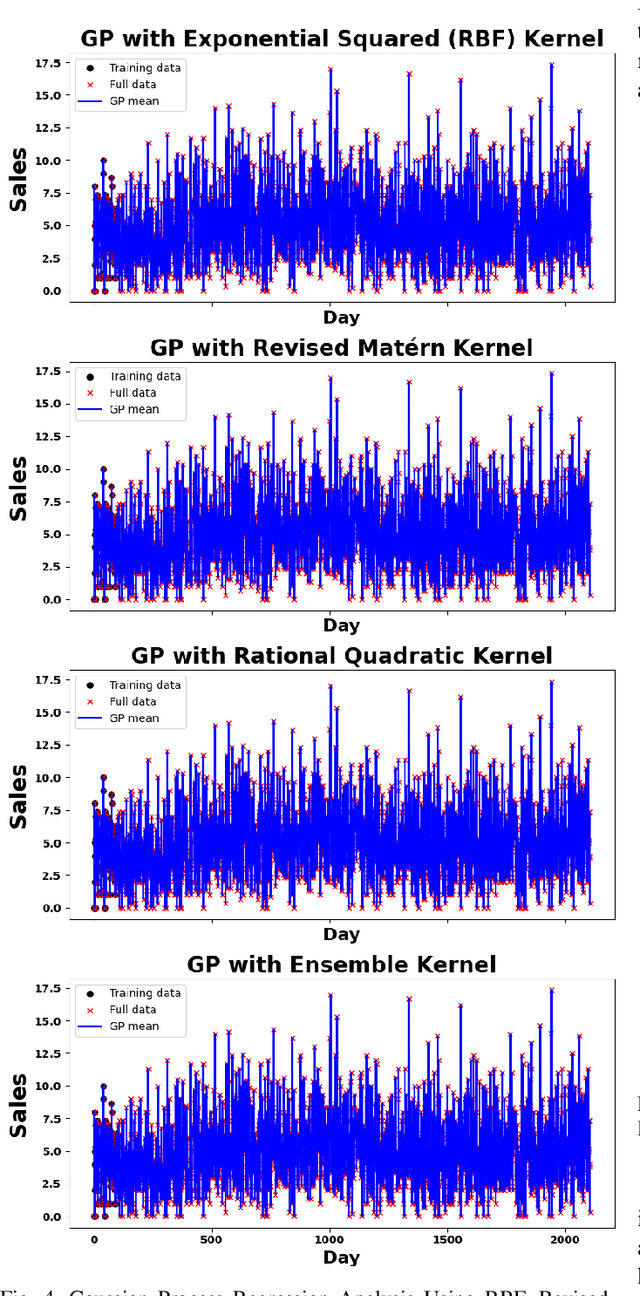
Abstract:This research employs Gaussian Process Regression (GPR) with an ensemble kernel, integrating Exponential Squared, Revised Mat\'ern, and Rational Quadratic kernels to analyze pharmaceutical sales data. Bayesian optimization was used to identify optimal kernel weights: 0.76 for Exponential Squared, 0.21 for Revised Mat\'ern, and 0.13 for Rational Quadratic. The ensemble kernel demonstrated superior performance in predictive accuracy, achieving an \( R^2 \) score near 1.0, and significantly lower values in Mean Squared Error (MSE), Mean Absolute Error (MAE), and Root Mean Squared Error (RMSE). These findings highlight the efficacy of ensemble kernels in GPR for predictive analytics in complex pharmaceutical sales datasets.
Swin-Tempo: Temporal-Aware Lung Nodule Detection in CT Scans as Video Sequences Using Swin Transformer-Enhanced UNet
Oct 14, 2023Abstract:Lung cancer is highly lethal, emphasizing the critical need for early detection. However, identifying lung nodules poses significant challenges for radiologists, who rely heavily on their expertise for accurate diagnosis. To address this issue, computer-aided diagnosis (CAD) systems based on machine learning techniques have emerged to assist doctors in identifying lung nodules from computed tomography (CT) scans. Unfortunately, existing networks in this domain often suffer from computational complexity, leading to high rates of false negatives and false positives, limiting their effectiveness. To address these challenges, we present an innovative model that harnesses the strengths of both convolutional neural networks and vision transformers. Inspired by object detection in videos, we treat each 3D CT image as a video, individual slices as frames, and lung nodules as objects, enabling a time-series application. The primary objective of our work is to overcome hardware limitations during model training, allowing for efficient processing of 2D data while utilizing inter-slice information for accurate identification based on 3D image context. We validated the proposed network by applying a 10-fold cross-validation technique to the publicly available Lung Nodule Analysis 2016 dataset. Our proposed architecture achieves an average sensitivity criterion of 97.84% and a competition performance metrics (CPM) of 96.0% with few parameters. Comparative analysis with state-of-the-art advancements in lung nodule identification demonstrates the significant accuracy achieved by our proposed model.
Cyrus 2D Simulation Team Description Paper 2016
Feb 08, 2022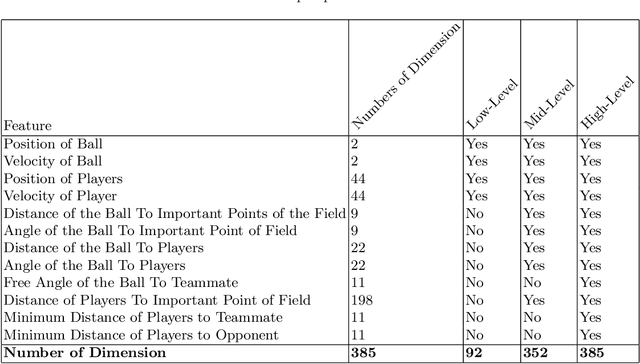
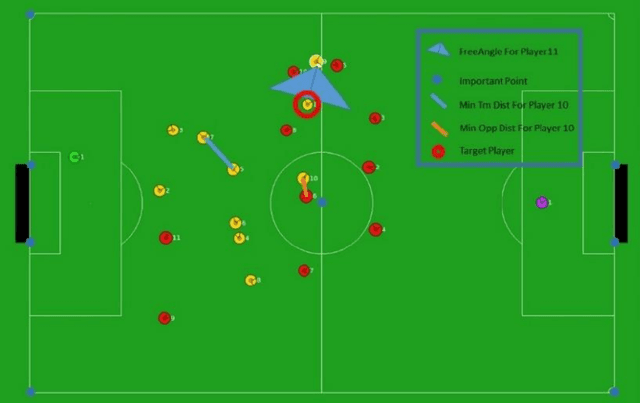
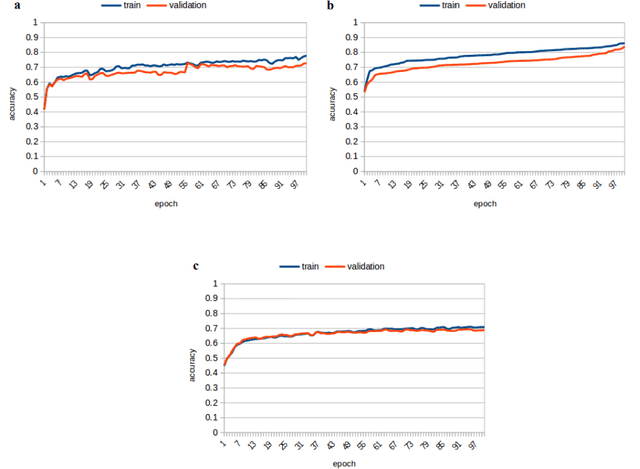

Abstract:This description includes some explanation about algorithms and also algorithms that are being implemented by Cyrus team members. The objectives of this description are to express a brief explanation about shoot, block, mark and defensive decision will be given. It also explained about the parts that has been implemented. The base code that Cyrus used is agent 3.11.
 Add to Chrome
Add to Chrome Add to Firefox
Add to Firefox Add to Edge
Add to Edge